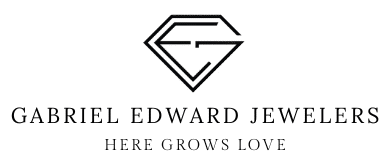
This is it, The Bachelor season finale.
We’ve got a Proposer ready to get engaged and we’ve narrowed his search down to two Center Diamond Finalists. One of these lucky rocks is getting mounted on a beautiful ring and given to the love of his life. The other is taking a red-eye flight back to India.
Let’s meet the contestants, learn some diamond things, and see which one you think deserves the rose.
First up, a side-by-side picture taken from roughly the same distance she’ll be admiring the ring on her finger. Both Natural Diamonds are graded “I” Color by the GIA, one has “Strong Blue” Fluorescence and the other has “Medium Blue” Fluorescence.
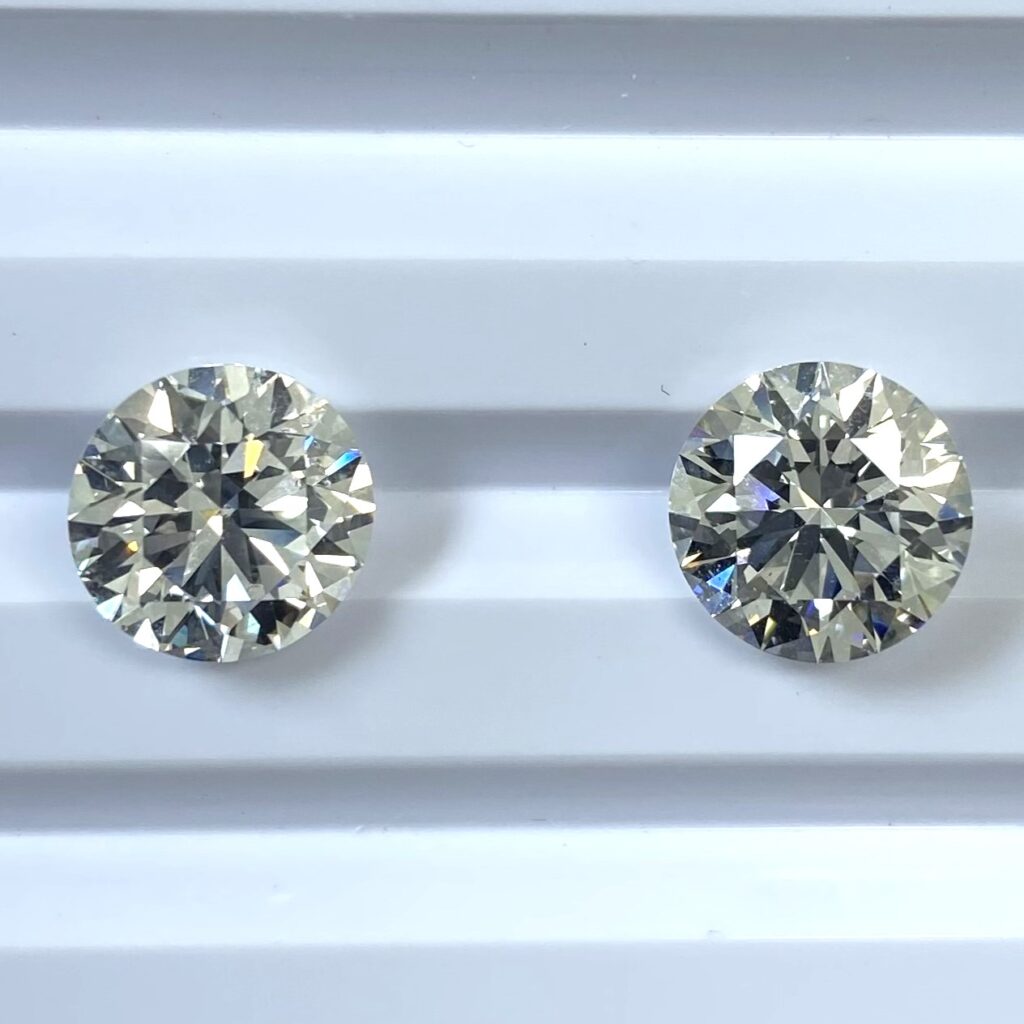
Remember what we’ve learned about Fluorescence- especially in diamonds graded “I” Color or lower, most observers find fluorescent stones more appealing than stones without. Do you see one stone whiter than the other?
A reminder that pictures rarely do justice here. See your Diamonds in person, and FaceTime your Hinge matches before meeting up.
Which one of our contestants is strongly fluorescent?
On the left we have a GIA Natural Diamond, 2.78 carats, “I” Color and “SI1” Clarity (Strong Blue FL). On the right, another GIA Natural Diamond, 3.01 carats, “I” Color and “VS2” Clarity (Medium Blue FL).
BTW ????
There’s no right or wrong answer in terms of fluorescence’s effect / one looking whiter than the other. This is bigtime subjective. What you see and what you like should determine which diamond’s best for you.
Let’s run through the 4 Cs, starting with Carat Weight…
First, do those 0.23 carats look like a significant difference? Their difference in diameter is 0.22 mm. You might be able to tell them apart based on size, you might not. How about mounted on these sample rings? Which is which? A lot tougher to tell here, huh?

Which is which?
On the left, again, we have the 2.78 carat and on the right the 3.01 carat. You thought I was gonna switch them, didn’t you?
Let’s look at Cut, the most important of the Cs for light performance and sparkle…
We look at all stones under ASET and Ideal Scopes. The ASET Scope shows us what parts of a diamond are reflecting light and how much light exactly.
Red = big light return, green = lesser light return, blue = contrast.
If you’re seeing brown, you need glasses.
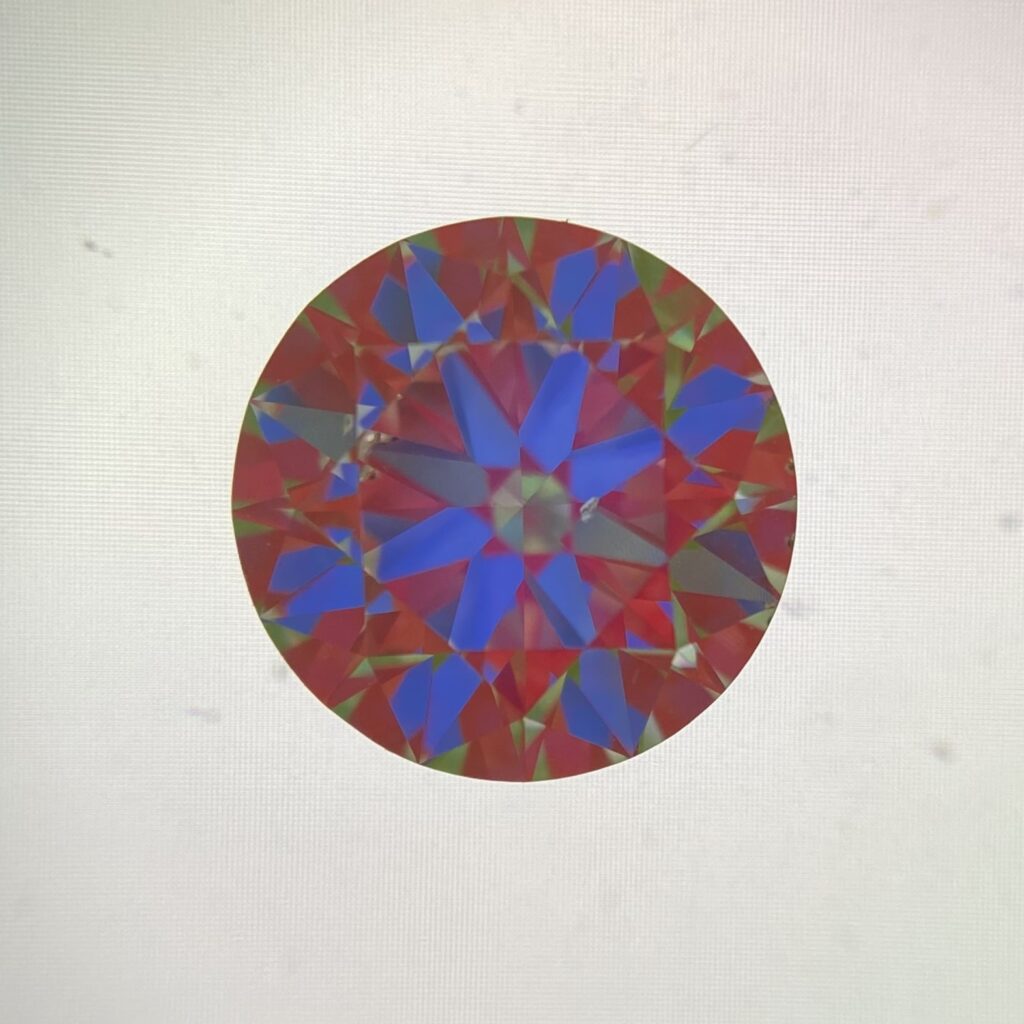
The 2.78 carat
- Perfect Table %, Depth %, Pavilion Angle = Excellent Light Return ✅
- 75% Lower Girdle Facet Length. Remember, lower LGF = chubby “arrows”. 75% falls within ideal ranges BUT this figure is rounded up to the nearest 5%. So the actual measure it most likely a 73-74% not a 75-76%. Again, this is a matter of personal preference, some dudes like thick arrows.

The 3.01 carat
- Perfect Table % and Depth %, Pavilion Angle within GIA “Excellent” Range = Excellent Light Return ✅
- Pavilion Angle isn’t within our ultra-meticulous preferred range, but the even facets, tremendous contrast brilliance (balance of light and dark areas), and perfect other proportions make this stone a beauty. Filter with the numbers but pick with your eyes!
- 34.5 Degree Crown Angle = Perfect Combo of white and rainbow light ✅
- LGF of 80% = thin arrows ✅
And now under IDEAL Scope…
This one’s even easier. More red = more light return.
Look at arrows in black to analyze symmetry.
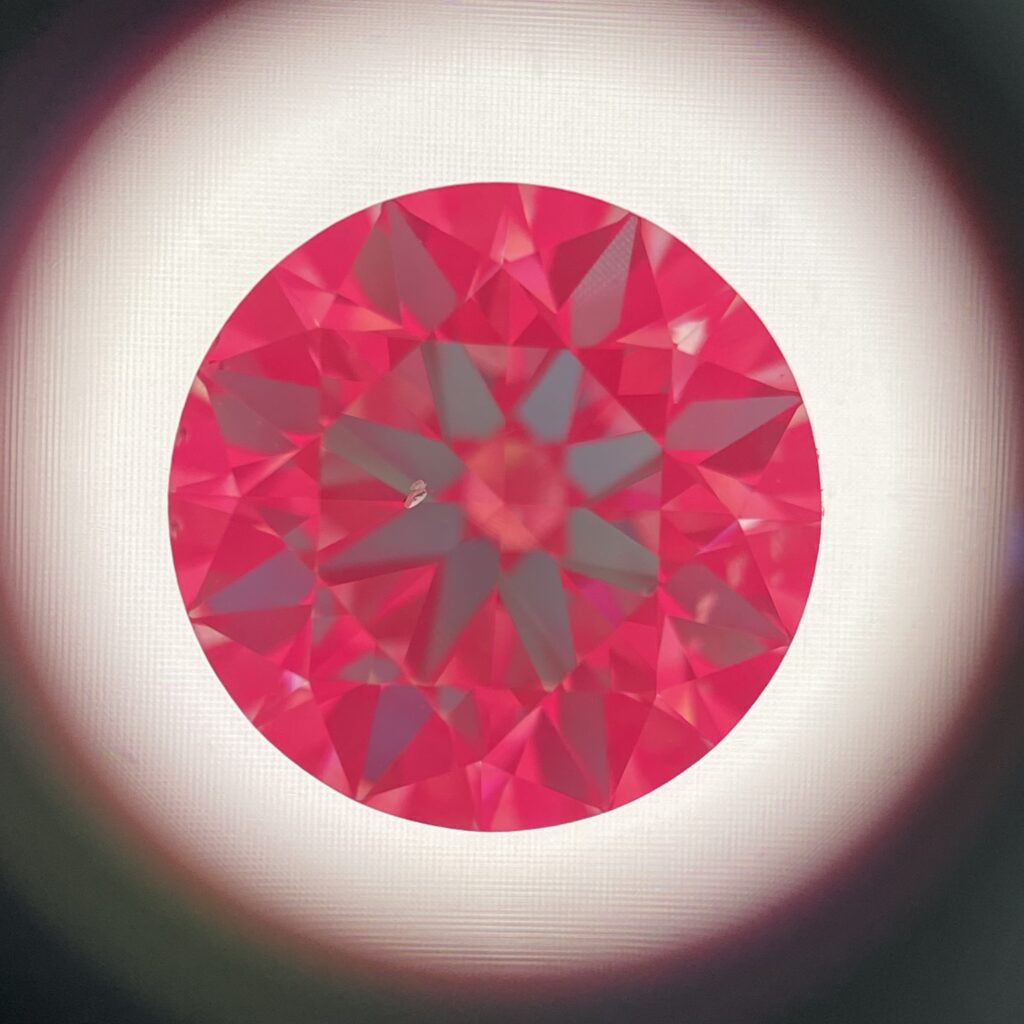
The 2.78 carat
- Again, excellent light return ✅
- We’re a shed off on symmetry especially where the arrows extend to the crown. However, this is a feature that, IMO, gets lost in the sparkle when you see the stone in person.
Overall fantastic light performance, sizzles like a 4th of July sparkler.

The 3.01 carat
- Excellent light return ✅
- GIA “Excellent” Pavilion Angle instead of top-sparkle Pavilion Angle = slight light leakage in Table. But, look at it in person and you’ll be holding back tears.
She’s a beauty. Sparkling like a firework.
And lastly, let’s look at Clarity…
In my opinion, aside from the LGF lengths, this is the biggest visible difference between the stones. The 2.78 carat is an “SI1”, and the 3.01 carat is a “VS2”. These are adjacent clarity grades, and the difference between them is that crystal in the 2.78 carat’s table. Looking at this stone under 10X magnification, the inclusion’s impossible to miss.

The 2.78 carat

The 3.01 carat
But take a look back at the first picture, a side-by-side taken with my iPhone- that’s roughly what the stones look like to your naked eye.
Once I spotted the crystal, my eyes immediately move to it whenever I look at the diamond (but remember, it’s a taste of personal preference). Some people will struggle to see the inclusion, some will see it when they close their eyes at night. Never buy blind, always compare stones in person to get a true feel for your diamond’s features.
Almost forgot about the 5th “C”, Cash ????
Ignore what I said in the last section, this is the biggest noticeable difference between the two stones.
If you get this one right you can name my first kid. How much is each stone?
The 2.78 carat is $31,000 and the 3.01 carat is (sit down if you’re standing) $39,400.
Is that one crystal, slimmer LGF and 0.23 carats worth $8,400? That’s for you to decide when it’s time to pick yours. We’re not about pushing you to spend more money, we’re about giving you a complete diamond education, so you can make a totally informed decision and create the Perfect Ring at an unbeatable price.
What did our Proposer go with? ????
My man SPLASHED OUT on the 3.01 carat and then set it on a Ring that belongs in an art gallery…
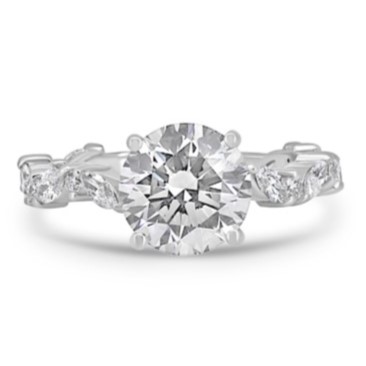

Which of these Rocks would be your Center Diamond?
Let us know in the comments ⬇️
